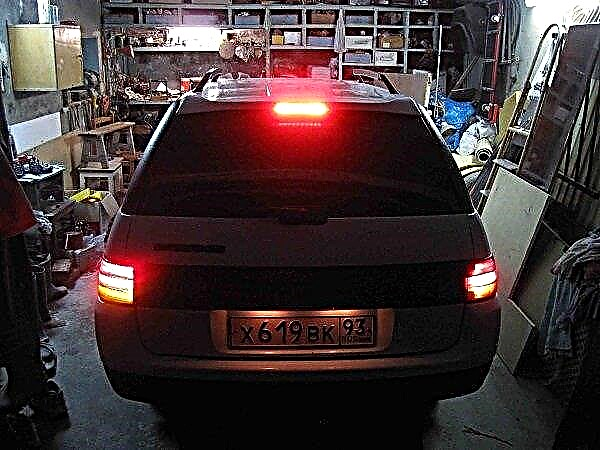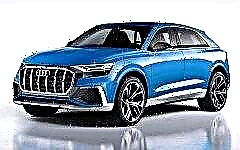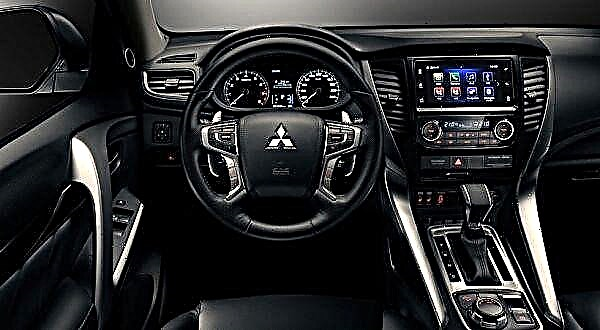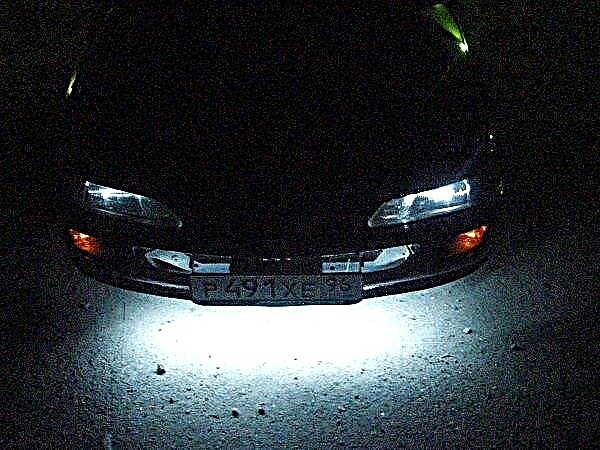
The content of the article:
- Advantages and disadvantages of LEDs
- Are LEDs harmful?
- The nuances of choosing LED auto lamps
- Front dimensions and feet
- Hind feet and dimensions
- Fog lights
- Interior LEDs
- Some features of LED mounting
When tuning a car, much attention is paid to the system of its signal lamps. This is quite natural, since incandescent lamps often cannot boast of high quality, they do not last long, creating many problems for the motorist. This does not apply to LED bulbs. They shine brightly, are distinguished by reliability, long service life and other useful qualities. You just need to choose the right LEDs so that they fit in size, connector and quality for a particular car. In this article, we will take a closer look at the nuances of choosing LED car lamps.
Pros and cons of LEDs

LEDs in cars have started to be used relatively recently. Since that time, there have been controversies about the need for such lighting. It should be noted that today, many car manufacturers produce LED car lamps. For example, Audi cars already come with LED headlights as standard.
Before proceeding with the selection of such lamps, you need to figure out why at all change traditional lamps in cars to LED ones.
The reasons may be different: for tuning the car, for saving, because this is a more perfect element, and so on. It should be noted that the number of supporters of the use of automotive LEDs is growing every year. This is due to the rather significant advantages of such lamps. Here are the main ones:
- An LED is more advanced than an incandescent lamp. It shines much brighter while having the same power. As the lighting quality improves, other drivers see your vehicle better.
- LEDs are not afraid of temperature fluctuations and shakes that are possible when driving on Russian roads.
- Such lamps are not afraid of moisture, so they can be freely used for external tuning of the car.
- The compact size of these lamps allows them to be installed virtually anywhere.
- The economy of LEDs is beyond praise. They burn brighter, last longer (2500 hours of continuous operation), while consuming 10 times less electricity. Thus, the efficiency of each lamp is much higher.
- LEDs do not heat up during operation, which cannot be said about traditional incandescent lamps, from which plastic parts can melt.
- With the help of LEDs, you can significantly improve the appearance of your car. That is why they are used for tuning (and even for domestic cars).
- The LED lights up for 0.2 sec. earlier than a conventional incandescent lamp. Sometimes it saves you from accidents.
However, before choosing LEDs, you need to understand their disadvantages in order to make an informed decision. The main disadvantages of these lighting elements are:
- High price. This is the main disadvantage. The production of LEDs requires a lot of money, and therefore lamps are not cheap. Most likely, in the future they will become cheaper, but at the moment the car enthusiast will have to pay several times more money for LEDs than for ordinary lamps. This scares off many motorists.
- Lack of preparation of auto electronics. For example, when installing an LED lamp in a turn signal, you can get frequent blinking (sometimes reminiscent of a strobe blinking). To fix this, you will need to install additional resistance, which will negate all the savings.
These pluses and minuses must be considered when choosing LEDs for a car.
Are LEDs useful or harmful?

When choosing, you need to take into account not only the advantages of LEDs, you also need to understand how safe these devices are for human eyes. Spanish scientists have found that prolonged exposure to light from such lamps can cause blindness, since LEDs act in a special way on the retina of the eye.
It is worth noting, however, that household LEDs, not automotive LEDs, were included in the study. The latter devices have less power, therefore, they have little effect on human eyes. In addition, no one looks at them for a long time.
Features of the choice of LED auto lamps

As mentioned above, you first need to decide what goals you are pursuing when replacing conventional lamps with LEDs. Then you need to select devices suitable for the design and model. This is the main rule when choosing LEDs.
You can find out which type of lamps is best for your car in different ways:
- From the instructions for the car.
- If you do not have this option, you can visit the Osram or Philips websites, which have a special service to find the type of LEDs that are suitable for a particular vehicle. In this case, you need to indicate the car model, year of its production, body type, and also the place where you want to replace the lamp. By the way, now there are many different catalogs and reference books that will allow you to choose the right LEDs.
- You can get out of the car the lamp that you plan to change to LED, carefully examine its markings, and also measure its dimensions.
Manufacturers of automotive optics often produce the same lamp model for different bases, which allows them to be used for both high-beam and low-beam lighting.
When choosing LEDs, you also need to consider the type of optics of the car. It can be lens (projection) or reflex. If the LEDs are installed in a lens, there are certain requirements for the lamps in terms of the width of the panel with the installed chips. Not all lamps fit the width of the panel, so they simply cannot be installed in the lens.
You also need to pay attention to the boot or the rear headlight cover. Since some LEDs are equipped with active cooling elements (fans), they must be covered with a cover or dust cover when installed in the headlight.
In addition to LEDs with a cooler, there are products with a passive radiator, the dimensions of which may exceed the dimensions of the rear headlight cover. Then you will have to cut a special hole in the headlight cover, which is undesirable. But many reliable manufacturers have special anthers that can replace plastic covers. In some headlights, the LED lamp itself serves as the back cover.
Also, when choosing lamps, you need to take into account the reliability of manufacturers. You should not buy LEDs from unverified Chinese companies, otherwise you can just throw your money down the drain. It is better to choose quality products from a reputable company.
After that, the only thing left to do is to choose a device for a specific lamp, suitable for mounting and providing high-quality lighting. The LEDs for each type of flashlight should be considered separately.
Front dimensions and feet

Most machines have baseless lamps. It is they who are installed on the headlights. These devices differ in standard sizes. If a T10 base is installed in the car, the lamp will have the designation W5W. If the base is of a different type (for example, BA9S), the LED will also have a different type - T4W.
These lamps can easily withstand temperatures of 100 degrees. To protect it, a stabilizer is provided that reduces the level of current passing through the crystal of the lighting product when the temperature rises. If desired, the motorist can choose devices that can cope with high temperatures even without a stabilizer (for example, SF class LEDs).Lamps of this series are distinguished by an affordable price, high-quality light and a wide directional angle. However, they are large in size, which sometimes makes it difficult to install instead of a traditional lamp.
It is also possible to install lamps of the SMD series in the dimensions, which are compact, excellent brightness, wide directivity and ease of installation. However, they are expensive. In this series of lamps there are “trickery” devices that allow installing LEDs on machines with complex electronic checks.
Hind feet and dimensions

For the rear stops, base lamps with two contacts are suitable. Such lamps are code P21 / 5W. In machines, such plinths are usually referred to as "1157". You can also purchase a more modern type of two-pin lamps from the 14HP series, which are equipped with 14 high-quality diodes. This type of lamp is suitable for those car enthusiasts who prefer quality, reliability and brightness.
You can go the other way and choose a product of the 3x1W series, in which there are three LEDs (each by a watt). They operate from a special impulse voltage source. Such LEDs have a maximum light output comparable to three-watt diodes.
An excellent option would be to purchase SMD lamps. In them, the car owner can choose the required number of LEDs (15, 18, 24 or 27). In the diodes of this series, 3 chips are installed, that is, 3 LEDs are located in one case at once. There is a budget device with 1-2 chips, only this reduces the brightness of the diodes.
If you want to install quality LEDs, but not spend a lot of money, choose SF series lamps. They are affordable, bright and easy to install.
By the way, some cars have single-ended lamps with one contact. The code "1156" corresponds to them.
Fog lights

Lamps for "fog lights" are made as inserts in the front headlights. In fact, they duplicate the dimensions. In this case, the visibility of the car in the traffic stream is improved both during the day and at night. But the quality of lighting is much worse in comparison with a halogen or xenon lamp.
Interior LEDs

Many "tuners" install LEDs even inside the car. Traditional products are of the fiston type with a large length (3-4.1 mm).
Cabin diodes are divided into the following subspecies:
- lamps installed instead of the standard factory lamp directly into the connector. Similar LEDs have much the same design and can be easily replaced by the car owner. Due to their compact dimensions, these lamps help out in small devices;
- socket-mounted lamps, but with different dimensions. This creates significant problems. The new lamp may simply not fit into the "box". The increase in size is usually due to the large number of LEDs, which increases the brightness of the lighting;
- rectangular matrices with different numbers of LEDs. However, such matrices are rarely placed in the car interior lampshades.
Some features of LED mounting

Installation of LEDs is not difficult. You just need to first decide on the required dimensions, evaluate your budget and choose high-quality LEDs that are suitable in size, base and operating current.
The alteration should begin by replacing the bulbs in size. Then go to the illumination of the glove compartment and trunk. With the advent of some experience, you can tackle the taillights, foglights and interior lighting. Just don't tackle everything at the same time.
Successful selection and installation of LEDs!











